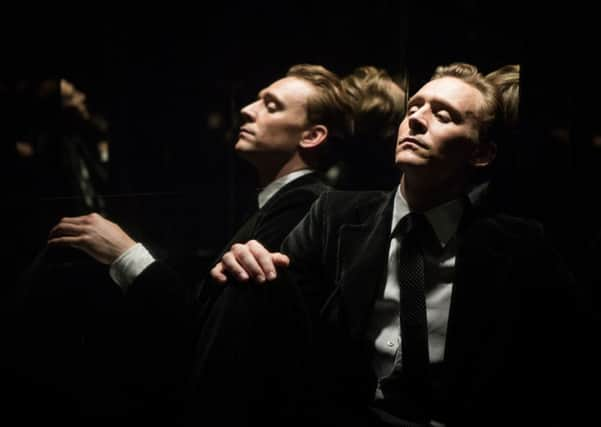High Rise: The unfilmable novel which became an arthouse winner


Ben Wheatley likes a challenge. By his own admission the 43-year-old writer/director sought out J G Ballard’s High-Rise, one of several books written by the cult novelist that many filmmakers have long considered to be unfilmable.
After a run of commercial and artistic successes that included Kill List, Sightseers, A Field in England and a couple of episodes of Doctor Who, Wheatley and partner Amy Jump began looking for more ambitious projects. High-Rise was one of them.
Advertisement
Hide AdAdvertisement
Hide AdThe rights were with veteran producer Jeremy (The Last Emperor) Thomas, who had long nurtured an ambition to bring the 1975 book to the screen. Wheatley pitched himself and Jump to direct and write. The reaction, he says, was overwhelmingly positive.
“There was a real will to make the film,” he says. “A lot of people wanted it to happen, which was great. It all happened really fast.
“Some of Ballard’s things are harder to sell. Atrocity Exhibition is a tough one even though it’s one of the rare ones that’s been adapted. For me High-Rise is a very visual book. It has a style to it – kind of like an action movie even though it’s a story that confounds all the time. You think you’ll get a straighter narrative than you receive.”
The book is set within an ultra-modern, luxury, high-rise apartment block that eventually isolates its residents from the outside world. And as the various elements degenerate into separate groups waging war with each other, so a young doctor, Laing, rises to the surface.
Advertisement
Hide AdAdvertisement
Hide AdTom Hiddleston plays Laing in a casting coup that topped off the rest of the ensemble. Other faces include Sienna Miller, Luke Evans, James Purefoy (a Wheatley favourite) and, as the cuckolded, crippled, Howard Hughes-esque architect Royal, Oscar-winner Jeremy Irons. “Tom is interesting,” muses Wheatley. “You can feel the intelligence, he’s also got matinee idol looks but then there’s something a bit distant about him as well. He has that twinge. You see it a lot in the roles that he plays where there’s something going on that you can’t quite put your finger on.
“Jeremy is almost a bit intimidating, a bit scary to deal with because he has done it all,” he laughs. “It was a role I couldn’t imagine anyone else doing. He’s trying to convince himself that what he’s done is not a terrible disaster. Jeremy delivered that right level of arrogance, interest and style.”
Wheatley and Jump set High-Rise not just within Ballard’s visionary brutalist building but also within the mid 1970s. Thus this ambitious movie became a period drama rooted in the dystopia of a specific period. The dark sci-fi of Ballard’s tale was a bonus.
The film was shot largely within a concrete sports centre in Bangor and an empty ferry terminal in Belfast. Sets were built and original architecture utilised the proportions of buildings that seemed to have inspired the look and feel of Ballard’s book.
Advertisement
Hide AdAdvertisement
Hide Ad“We went up and down England and there’s nothing left, or you’ve got stuff like Barbican, which is in use and you can’t shoot in there. Or you could but it would just be very restrictive. Or you’ve got something like Birmingham Library where we tried to get in, they wouldn’t let us in and then they knocked it down!
“They’re really unloved, those buildings. A lot of Victorian buildings got knocked down after the Second World War because people thought they were gloomy. The same thing has happened with the brutalist stuff. They will look back in 20 years time when they don’t have the same stigma as they have now and think, ‘Why did we do that?’ I know there was plenty of it that failed. It was built cheaply and didn’t look very good. People were miserable with it. But a lot of stuff that got knocked down was also incredible.”
Ballard’s message within the construct of High-Rise is both a warning and an observation: that society is on the brink of breakdown. Wheatley agrees with the notion and says the book (and his film) captures it.
“I think we are, always. And in a personal sense as well because we are going to die, all of us. And that’s the same thing but on a micro scale: that’s your civil war. That’s the breakdown in society when you become unable to do what you do anymore. And no-one’s really prepared for that; everyone thinks they’re going to live forever. As a person you have that trajectory. That’s going to happen. Now as a society whether it happens or not, that’s something else.”
Advertisement
Hide AdAdvertisement
Hide AdBallard saw it first-hand in 1943 as a schoolboy in Shanghai when the Japanese invaded and he and his parents were interned. He poured his experiences into an autobiographical novel, Empire of the Sun. Wheatley believes such horrors and deprivations could re-emerge today. “[Ballard had] seen something that was totally, unimpeachably strong like the British society that was out in the East where he was, completely being shredded in a split second and everybody’s behaviour change. It’s the same in Eastern Europe as well. I bet they never thought it was going to get as bad as it got – when you get neighbours killing each other.
“It could happen in the UK as much as anywhere. There are no guarantees. It certainly felt that way when the banks were teetering on the edge of collapse. What would have happened next? Maybe some kind of armed struggle.
“That’s the bigger, sexier, apocalyptic view but the personal view – the collapse of your family, the collapse of your health – are that those things are guaranteed. It’s going to happen.”
High-Rise (15) is out today.